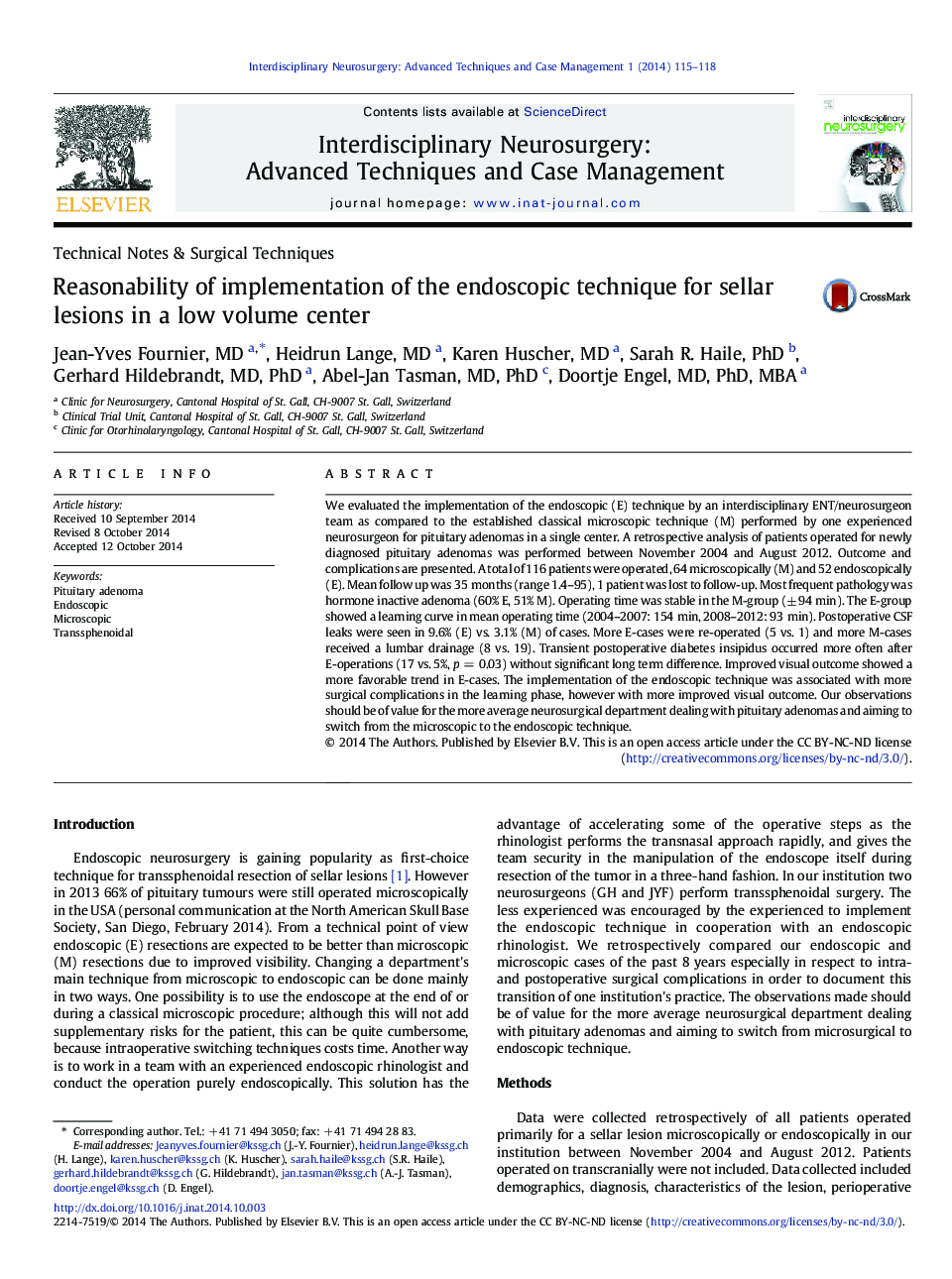| Article ID | Journal | Published Year | Pages | File Type |
|---|---|---|---|---|
| 3057878 | Interdisciplinary Neurosurgery | 2014 | 4 Pages |
We evaluated the implementation of the endoscopic (E) technique by an interdisciplinary ENT/neurosurgeon team as compared to the established classical microscopic technique (M) performed by one experienced neurosurgeon for pituitary adenomas in a single center. A retrospective analysis of patients operated for newly diagnosed pituitary adenomas was performed between November 2004 and August 2012. Outcome and complications are presented. A total of 116 patients were operated, 64 microscopically (M) and 52 endoscopically (E). Mean follow up was 35 months (range 1.4–95), 1 patient was lost to follow-up. Most frequent pathology was hormone inactive adenoma (60% E, 51% M). Operating time was stable in the M-group (± 94 min). The E-group showed a learning curve in mean operating time (2004–2007: 154 min, 2008–2012: 93 min). Postoperative CSF leaks were seen in 9.6% (E) vs. 3.1% (M) of cases. More E-cases were re-operated (5 vs. 1) and more M-cases received a lumbar drainage (8 vs. 19). Transient postoperative diabetes insipidus occurred more often after E-operations (17 vs. 5%, p = 0.03) without significant long term difference. Improved visual outcome showed a more favorable trend in E-cases. The implementation of the endoscopic technique was associated with more surgical complications in the learning phase, however with more improved visual outcome. Our observations should be of value for the more average neurosurgical department dealing with pituitary adenomas and aiming to switch from the microscopic to the endoscopic technique.
